Integrative approaches to understanding angiosperm origins and diversity (Viewpoint)
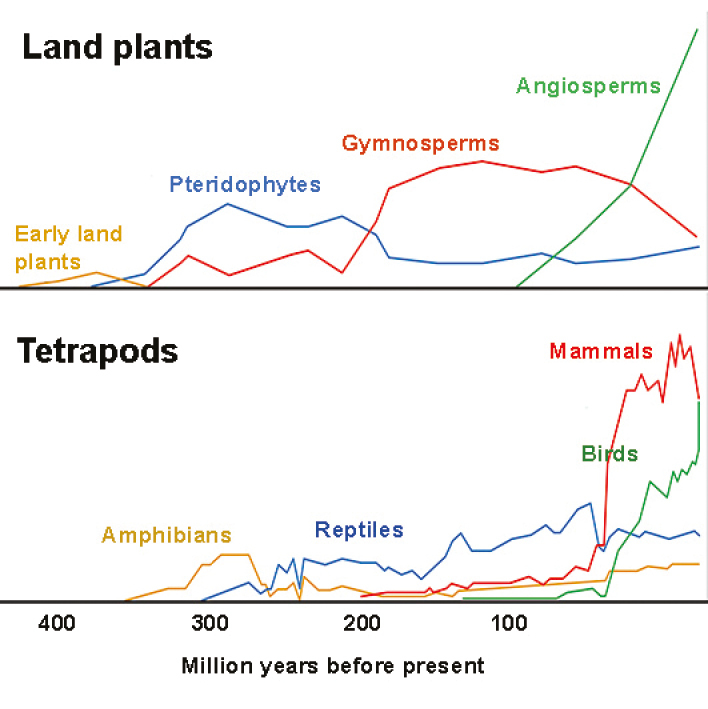
Annals of Botany 121: 1–8, 2018 doi: 10.1093/aob/mcx109
Angiosperms are the most species-rich group of land plants, but their origins, together with their rapid and intense diversification, have not yet been fully explained. Descriptions of evolutionary chronologies should ideally integrate molecular phylogenies, descriptive palaeontology and palaeoecology to give the full picture as to the origin of angiosperms. In this Viewpoint article, Katz explores the theory that ‘biodiversity creates biodiversity’ assessing the evidence from past and present ecologies, in particular focusing upon the effects of changes in herbivory and resource availability throughout the Phanerozoic.
Author: Ofir Katz
What are holocentric chromosomes good for? (Viewpoint)
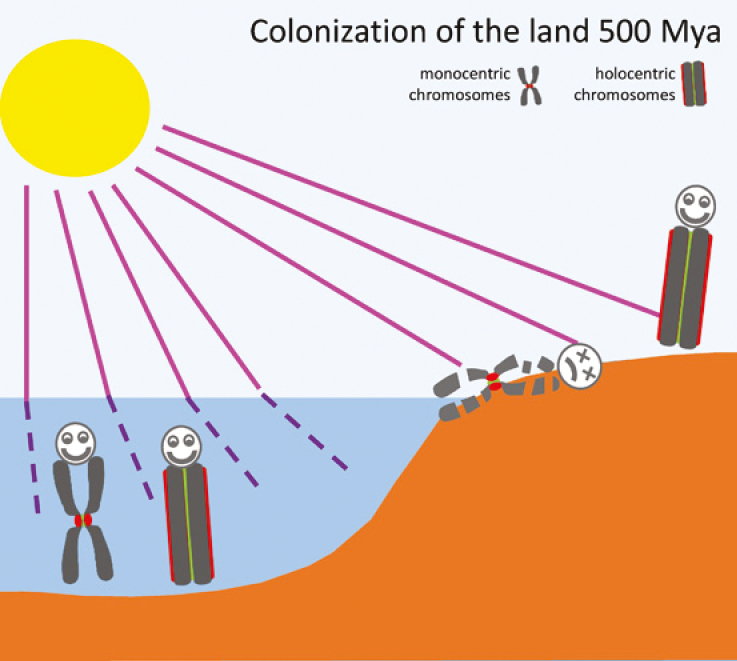
Annals of Botany 121: 9–16, 2018 doi: 10.1093/aob/mcx118
Holocentric chromosomes, unlike monocentric chromosomes, attach spindle microtubules along their entire length; they have long been considered as a peripheral peculiarity with an unclear function. Zedek and Bureš summarise evidence that the key to their evolutionary role is the tolerance to fragmentation whereby holocentric chromosomes confer an advantage in times of exposure to cosmic radiation, desiccation and other chromosome-breaking factors. They conclude that holocentric chromosomes may have played a major role in the evolutionary trajectory half a billion years ago; the first land colonisers had to cope with intense radiation and desiccation, and phylogenetic evidence suggests that holocentricity may underlie the resilient genetic makeup of the ancestors of land plants and animals.
Authors: František Zedek and Petr Bureš
Molecular mimicry modulates plant host responses to pathogens (Invited Review)
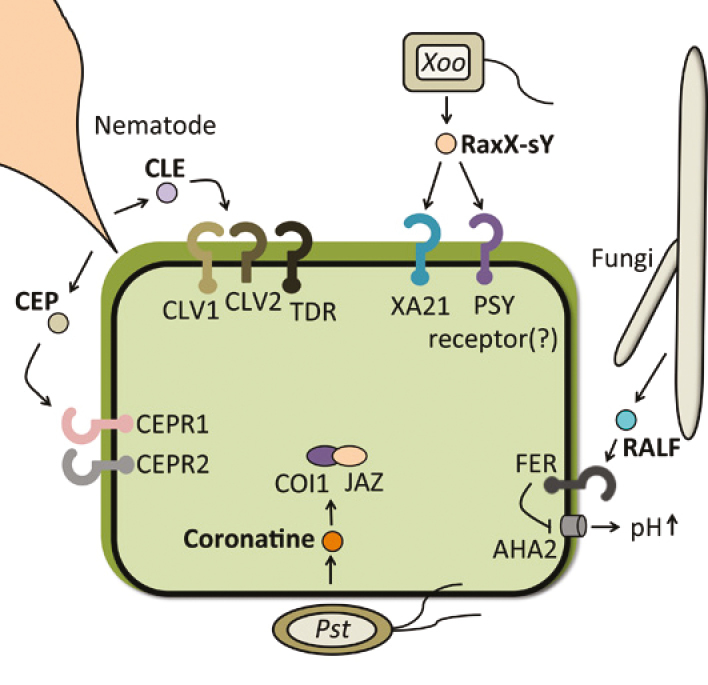
Annals of Botany 121: 17–23, 2018 doi: 10.1093/aob/mcx125
Pathogens often secrete molecules that mimic those present in the plant host. Recent studies indicate that some of these molecules mimic plant hormones required for development and immunity. Ronald and Joe review the literature on microbial molecules produced by plant pathogens that functionally mimic molecules present in the plant host. They include examples from nematodes, bacteria, and fungi with a particular emphasis on RaxX, a microbial protein produced by the bacterial pathogen Xanthomonas oryzae pv. oryzae.
Authors: Pamela Ronald and Anna Joe
What makes New Caledonian rainforests so different? (Research in Context)
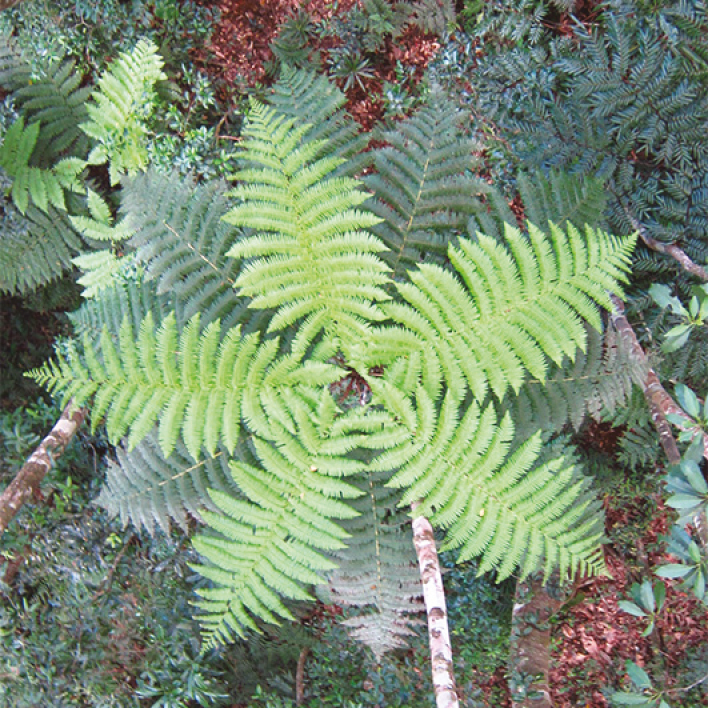
Annals of Botany 121: 25–35, 2018 doi: 10.1093/aob/mcx107
The biodiversity hotspot of New Caledonia is globally renowned for the diversity and endemism of its flora. Ibanez et al. compare the composition, the diversity and the structure of nine 1-ha plots of New Caledonian rainforests with fourteen 1-ha plots located across other tropical rainforests in Australia, Fiji, Papua New Guinea and the Solomon Islands. This provides the first such overview for the Southwest Pacific region. Rainforests of this region are highly diverse, even on a global scale. High stem densities, endemism and abundance of tree ferns are characteristics of New Caledonian rainforests.
Authors: Thomas Ibanez, E. Blanchard, V. Hequet, G. Keppel, M. Laidlaw, R. Pouteau, H. Vandrot, and P. Birnbaum
Shaping the cline of floral calyx lobe length in Asarum
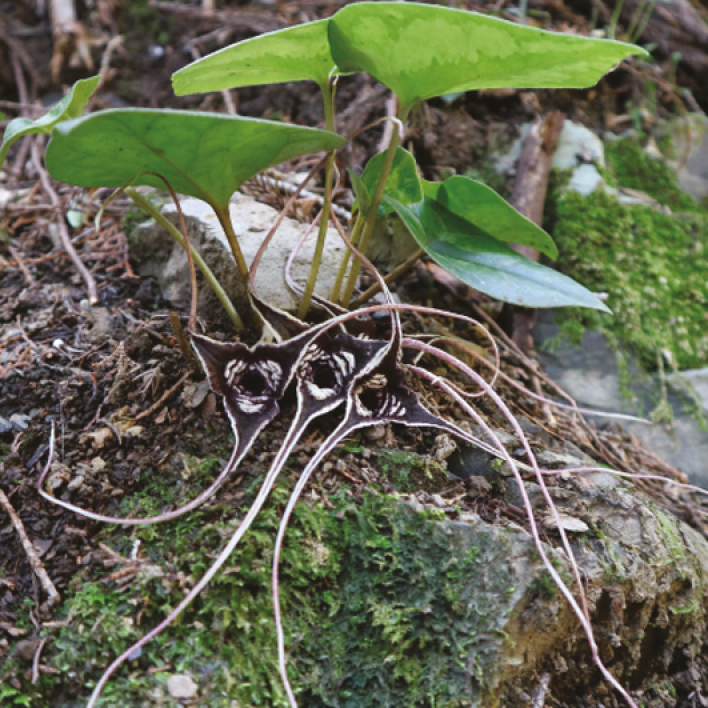
Annals of Botany 121: 37–46, 2018 doi: 10.1093/aob/mcx122
Clines, the gradual variation in traits along a geographic axis, can be formed by both neutral and selective processes. Takahashi et al. accessed genetic and morphological variation of the series Sakawanum (genus Asarum, Aristolochiaceae), which shows interspecific clinal variation in the calyx lobe lengths. A total of 27 populations covering the natural geographic distribution of Sakawanum were sampled and six nuclear microsatellite markers were used to investigate genetic structure and genetic diversity. Calyx lobe lengths were significantly differentiated among the taxa, while genetic differentiation was low, implying interspecific gene flow within the series. Genetic differentiation was significantly lower than phenotypic differentiation. This study elucidates the roles of population history and divergent selection in shaping the cline of a flower trait.
Authors: Daiki Takahashi, Tsutomu Teramine, Shota Sakaguchi, and Hiroaki Setoguchi
Aridification drives evolution of the cycad genus Dioon
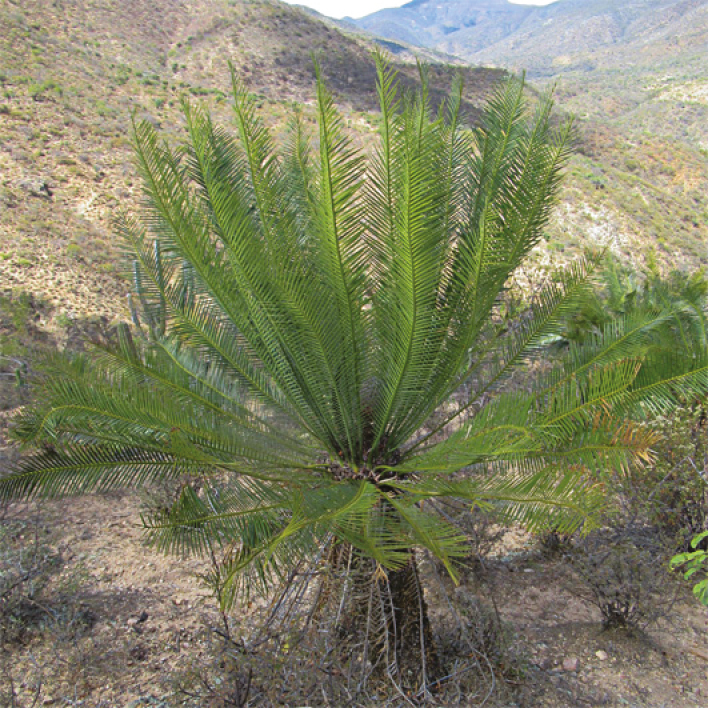
Annals of Botany 121: 47–60, 2018 doi: 10.1093/aob/mcx123
Aridification is understood to pose a threat to tropical flora. Gutiérrez-Ortega et al. show that diversification of xeric groups can be directly associated with aridification. In the cycad genus Dioon (Zamiaceae), they found that lineages diversified during times of desert formation in Mexico, and hence, some Dioon species shifted their habitats from humid forests to arid zones. Once established in arid habitats, xeric species show epidermal traits that counteract aridity stress. Phylogenetic and anatomical evidence confirms that aridification has been an important pressure driving evolution of Dioon.
Authors: José Said Gutiérrez-Ortega, Takashi Yamamoto, Andrew P. Vovides, Miguel Angel Pérez-Farrera, José F. Martínez, Francisco Molina-Freaner, Yasuyuki Watano and Tadashi Kajita
Root hairs increase rhizosphere extension and carbon input to soil
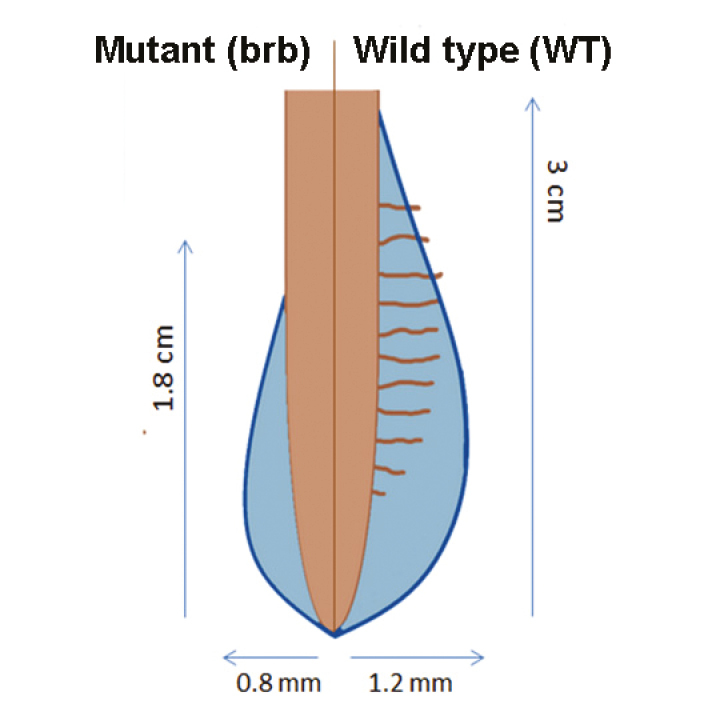
Annals of Botany 121: 61–69, 2018 doi: 10.1093/aob/mcx127
Little is known about the factors controlling spatial distribution of root exudates in soil. Holz et al. tested whether root hairs of barley exude organic substances to increase rhizosphere extension. Plants with root hairs allocated more carbon to roots and rhizosphere, and strongly increased the radial rhizosphere extension and total exudation. Despite a greater C allocation belowground for plants with root hairs, CO2 efflux from soil was similar for both plant types.
Authors: Maire Holz, Mohsen Zarebanadkouki, Yakov Kuzyakov, Johanna Pausch, and Andrea Carminati
Using boosted regression trees to predict seed desiccation responses
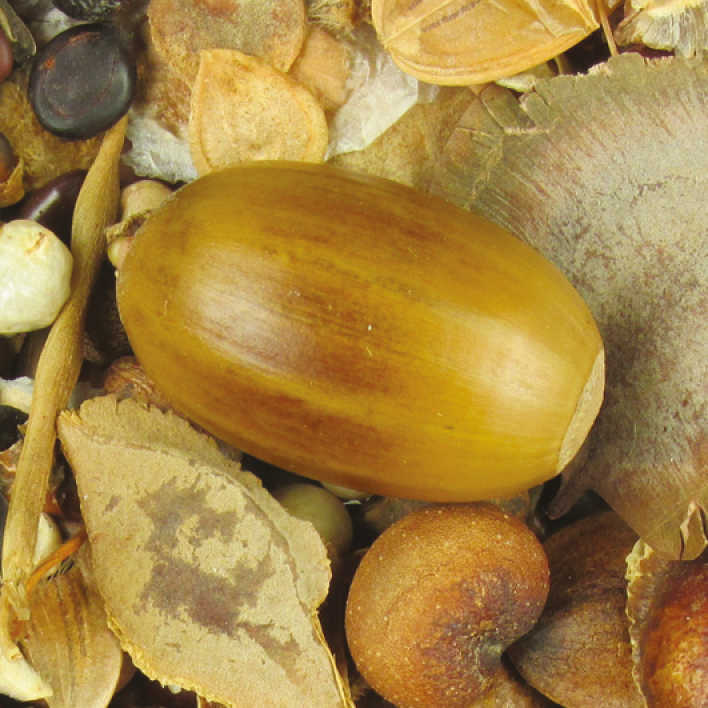
Annals of Botany 121: 71–83, 2018 doi: 10.1093/aob/mcx128
Seed desiccation response is an important trait in terms of a species’ regeneration ecology, and one that also has significant implications for its conservation. Most seed plants produce desiccation-tolerant (orthodox) seeds. Comparatively few species have desiccation-sensitive (recalcitrant) seeds that do not survive dehydration, and so cannot be conserved in traditional seed banks. Wyse and Dickie develop a set of models to predict species’ seed desiccation responses, using taxonomy alongside existing trait, location, and climate data for the floras of Ecuador, the United Kingdom and Ireland. These models may prove helpful in providing critical decision-making support for plant conservation activities.
Authors: Sarah V. Wyse and John B. Dickie
RAD-seq and morphology clarify evolutionary relationships in Eurasian bee orchids
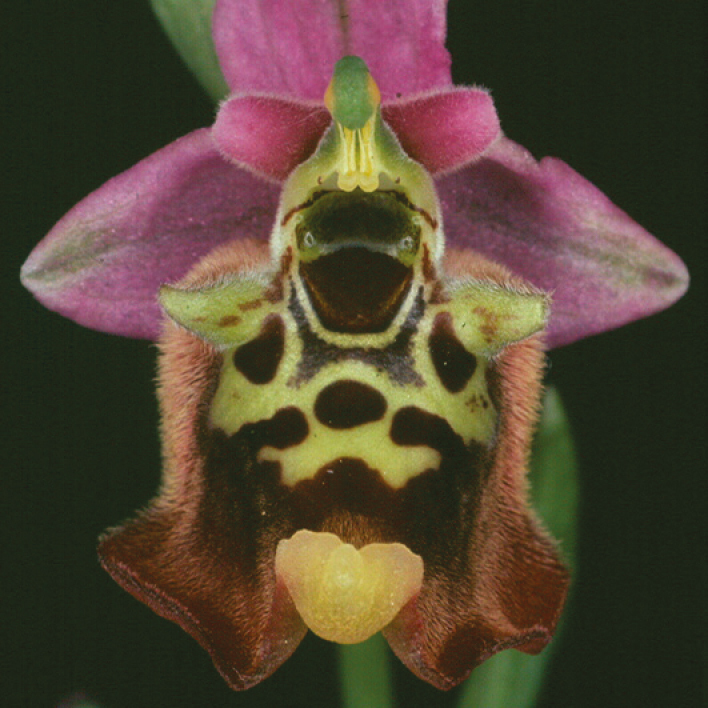
Annals of Botany 121: 85–105, 2018 doi: 10.1093/aob/mcx129
Eurasian bee orchids (Ophrys, Orchidaceae) have become the most popular model system for studying reproduction via insect-mediated pseudo-copulation and for exploring the consequent, putatively adaptive, evolutionary radiations. However, despite intensive past research, both the phylogenetic structure and species diversity within the genus remain highly contentious. Bateman et al. combine next-generation DNA sequencing with morphological cladistic analysis to clarify phylogenetic structure and character evolution within the genus. The morphological data proved unusually homoplastic and poorly congruent with the molecular data, which resolved three major groups; this strongly supported the monophyly of nine out of ten ‘macrospecies’ previously circumscribed using candidate-gene approaches.
Authors: Richard Bateman, Gábor Sramkó, and Ovidiu Paun
Endosperm development and hybrid seed failure in wild tomatoes
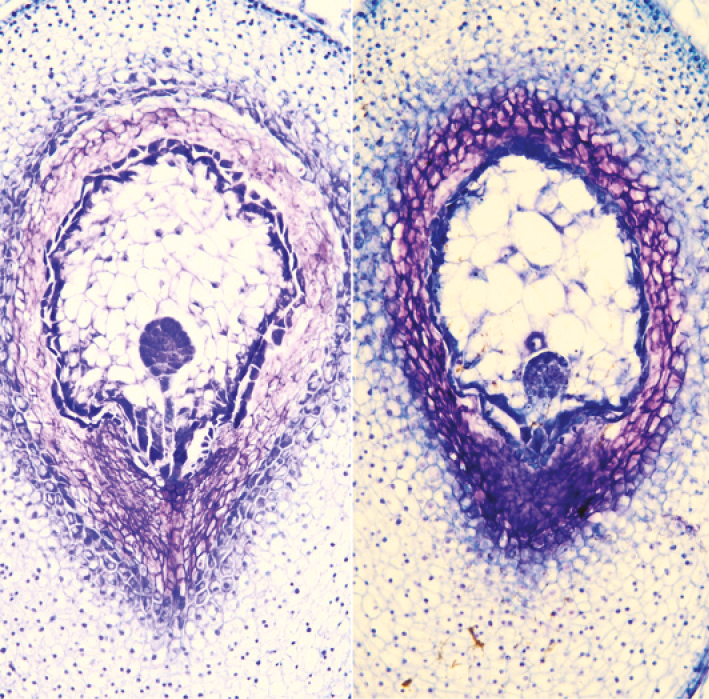
Annals of Botany 121: 107–118, 2018 doi: 10.1093/aob/mcx133
Hybrid seed failure may serve as a powerful and fast-evolving species barrier in flowering plants. Based on both evolutionary theory and empirical observations, the endosperm has been implicated as the nexus of developmental failures leading to hybrid embryo abortion. Work by Roth et al. on wild tomatoes (Solanum section Lycopersicon, Solanaceae) provides evidence that hybrid seed failure is almost universal between two of three studied species pairs, while the third yields mixtures of inviable and viable hybrid seeds. They identified endosperm proliferation defects at the early globular embryo stage as a plausible cause of seed abortion. Their observations suggest similarities in hybrid endosperm malfunction across developmental types (nuclear and cellular-type endosperm), and may pave the way for future work integrating morphological and molecular footprints of hybrid seed failure.
Authors: Morgane Roth, Ana M. Florez-Rueda, Stephan Griesser, Margot Paris, and Thomas Städler
Fire-timing in relation to reproduction and mast-seeding cycles
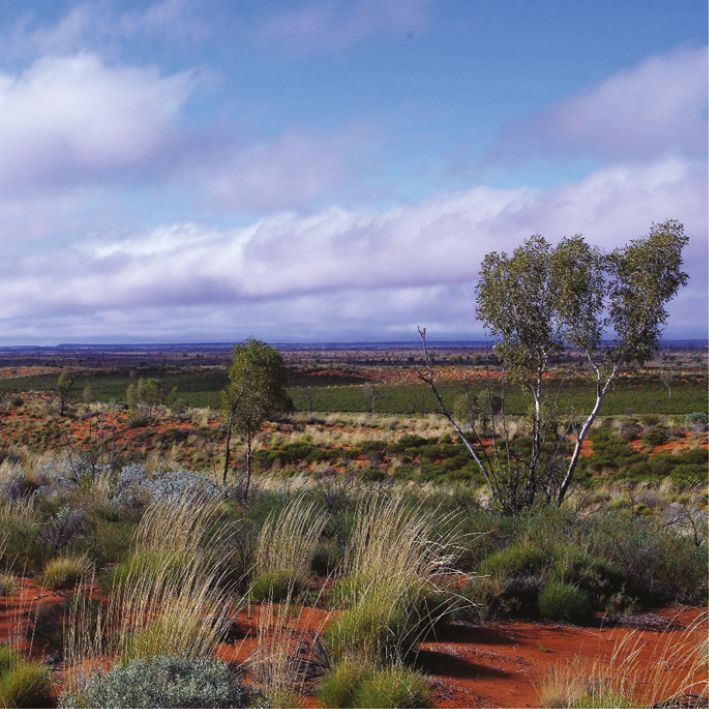
Annals of Botany 121: 119–128, 2018 doi: 10.1093/aob/mcx136
Fire-timing in relation to reproduction may be an important determinant of post-fire regeneration for plants that display mast-seeding cycles, and with seedbanks subject to high levels of predation. Wright and Fensham examined seedbank dynamics after masting, and tested whether fire-timing in relation to seedfall influences recruitment of the desert Australian masting grass, soft spinifex (Triodia pungens, Poaceae). Masting caused massive but short-lived seedbank pulses, and fires shortly after masting triggered much stronger recruitment than plants that were burnt but did not seed prior to fire. These findings indicate that interactions between fire and reproduction should be considered carefully when managing fire-sensitive masting plants like T. pungens.
Authors: Boyd R. Wright and Roderick J. Fensham
Hydraulic architecture of Eucalyptus grandis
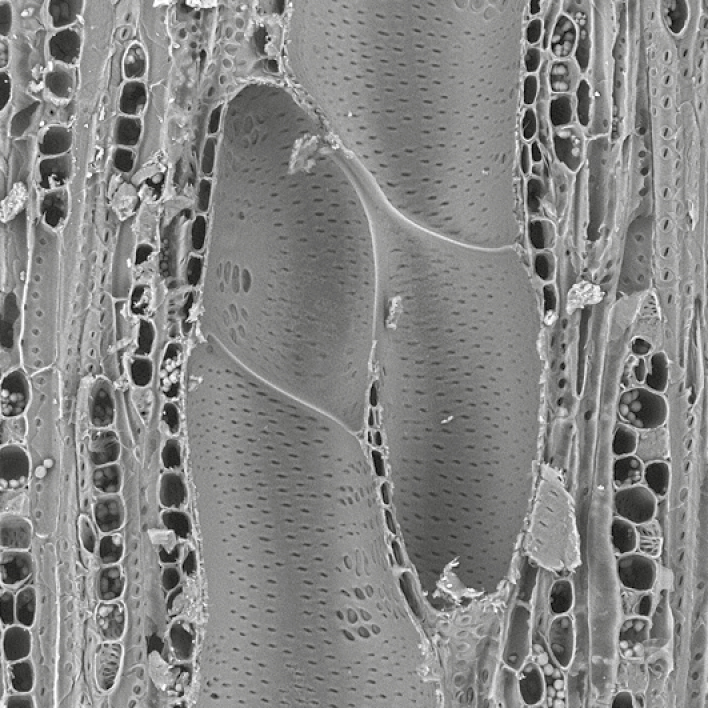
Annals of Botany 121: 129–141, 2018 doi: 10.1093/aob/mcx137
A comprehensive understanding of the systems behind vertical transport of water in tall trees is crucial when predicting susceptibility of these long-lived organisms to drought. Pfautsch et al. use detailed physiological and wood anatomical analyses of 20 m tall Eucalyptus grandis (Myrtaceae) trees to unveil that - contrary to widespread assumptions - the widest xylem vessels were guarded by the thickest pit membranes, located several meters above the ground. The results explain how ultrastructural traits of xylem help improve the efficiency and apical dominance of water transport and stress the importance of studying hydraulic architecture at the whole-tree scale.
Authors: Sebastian Pfautsch, Michael J. Aspinwall, John E. Drake, Larissa Chacon-Doria, Rob J. A. Langelaan, David T. Tissue, Mark G. Tjoelker, and Frederic Lens
The role of local pH in regulating rhizosphere priming effect
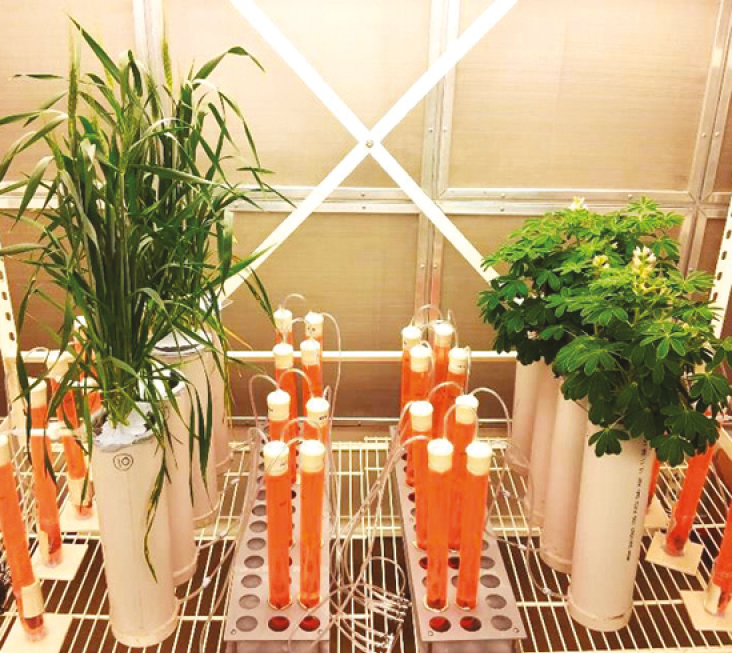
Annals of Botany 121: 143–151, 2018 doi: 10.1093/aob/mcx138
Plant roots can alter the decomposition rate of soil organic carbon (SOC) in the rhizosphere (root-soil interface) by either stimulating or suppressing the activity of microbes and enzymes. Wang and Tang used a 13C natural abundance approach to examine the effect of nitrogen form on wheat and white lupin rhizosphere pH and associated changes in the SOC decomposition. They found that the amount of CO2 derived from SOC in the presence of plants positively correlated with rhizosphere pH. In addition, microbes in the rhizosphere of nitrate-fed plants acted as an immediate sink for nitrogen released through the enhanced SOC decomposition.
Authors: Xiaojuan Wang and Caixian Tang
Within-plant epigenetic mosaicism is related to subindividual heterogeneity in seed size and production
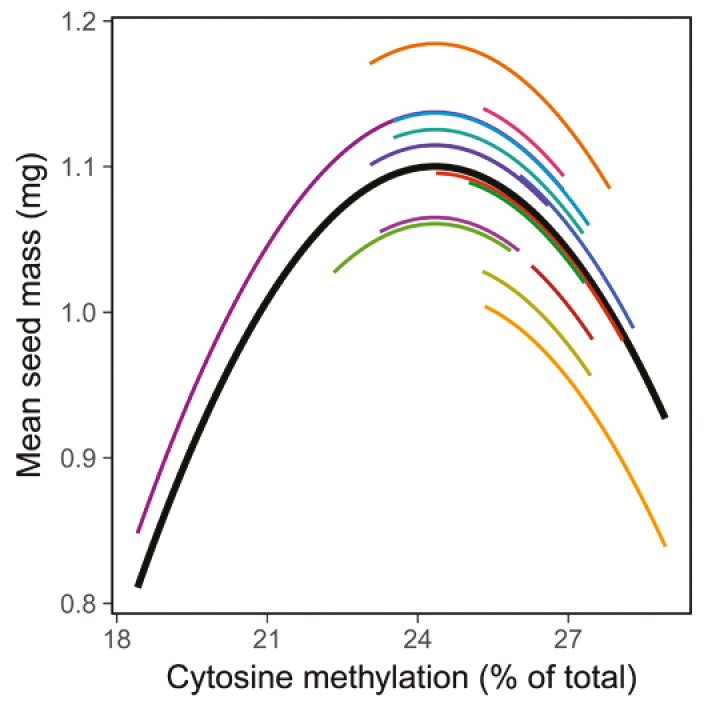
Annals of Botany 121: 153–160, 2018 doi: 10.1093/aob/mcx140
Homologous organs produced by individual plants are not identical, and within-plant phenotypic variance often exceeds variance between plants. Alonso et al. hypothesised that epigenetic mosaicism, caused by subindividual heterogeneity in DNA methylation levels, may account for within-plant variation in seed size and seed production in the evergreen Mediterranean shrub Lavandula latifolia (Lamiaceae). They found that DNA samples from leaves located in different parts of the same shrub differed in global DNA cytosine methylation, and that such subindividual heterogeneity was nonlinearly related to variation in number and size of seeds produced per inflorescence.
Authors: Conchita Alonso, Ricardo Pérez, Pilar Bazaga, Mónica Medrano and Carlos M. Herrera
Heterochronical trends promote labile floral strategies in Eugenia
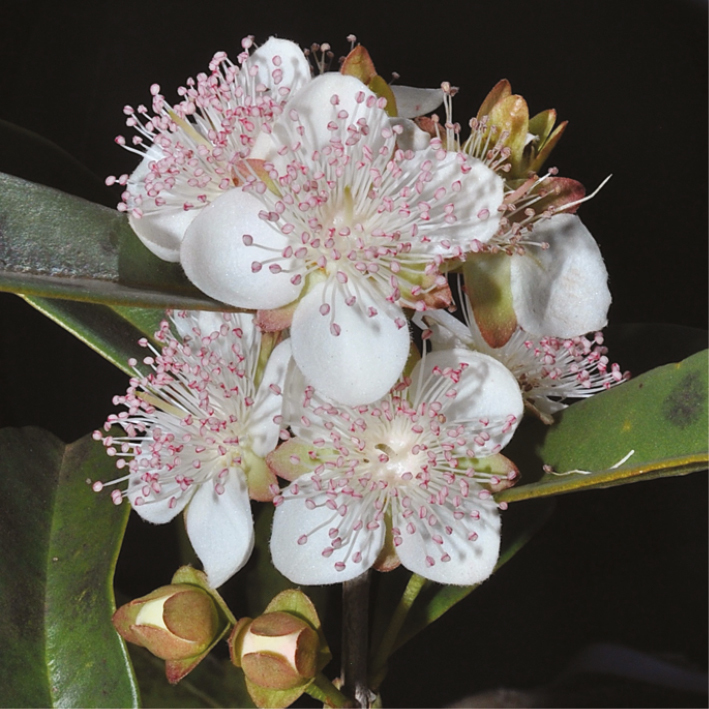
Annals of Botany 121: 161–174, 2018 doi: 10.1093/aob/mcx142
Comparative ontogeny elucidates subtle changes in developmental rate, known as heterochrony, that discretely alter morphology between species. Vasconcelos et al. show how these trends explain evolution of Eugenia (Myrtaceae) megadiversity in contrast to its apparent flower uniformity. Selected steps of the floral ontogeny were described and compared between 21 species; trait data were contrasted for correlation analysis. Heterochrony was evident from size differences between structures at similar developmental stages. These differences underlie variable levels of investment in protection and subtle modifications to symmetry and breeding system, producing a wide spectrum of floral display and contributing to fluctuations of fitness in the genus.
Authors: Thais N. C. Vasconcelos, Eve J. Lucas, Jair E. Q. Faria, and Gerhard Prenner
Fungal parasites reduce lichen fitness
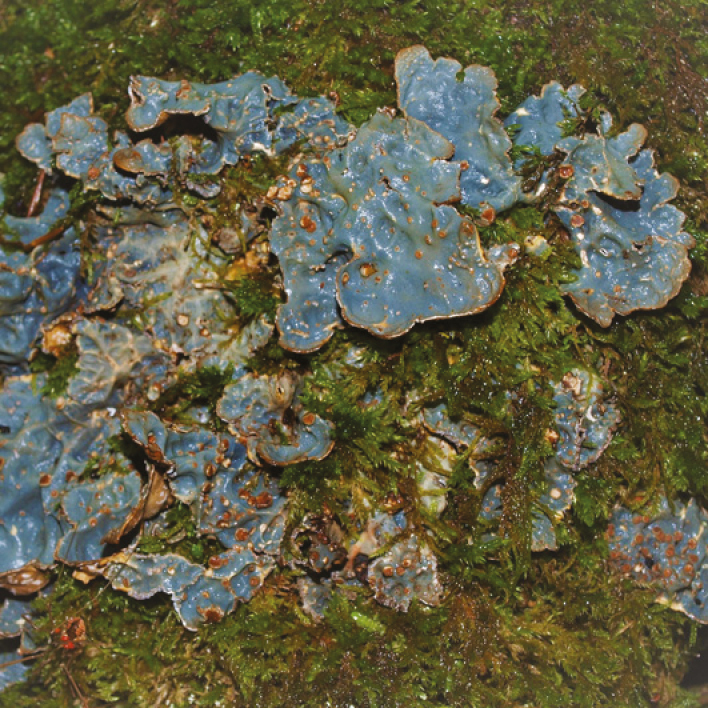
Annals of Botany 121: 175–182, 2018 doi: 10.1093/aob/mcx124
To elucidate parasitic interactions comprising effects of fungal parasites on lichens, Merinero and Gauslaa ran a growth-chamber experiment to assess the effects of the specialised fungi Plectocarpon lichenum and P. scrobiculatae on the fitness of their lichen hosts Lobaria pulmonaria and L. scrobiculata. Growth rates of infected and non-infected lichens were compared. Infected lichens grew much less than the non-infected plants, and lichen growth rates decreased with increasing parasite abundance. This study shows for the first time that specialised fungal parasites directly reduce lichen fitness, thereby expanding our understanding of parasitic interactions involving lichens and specialised lichenicolous fungi.
Authors: Sonia Merinero and Yngvar Gauslaa
The autonomous flowering-time pathway pleiotropically regulates seed germination
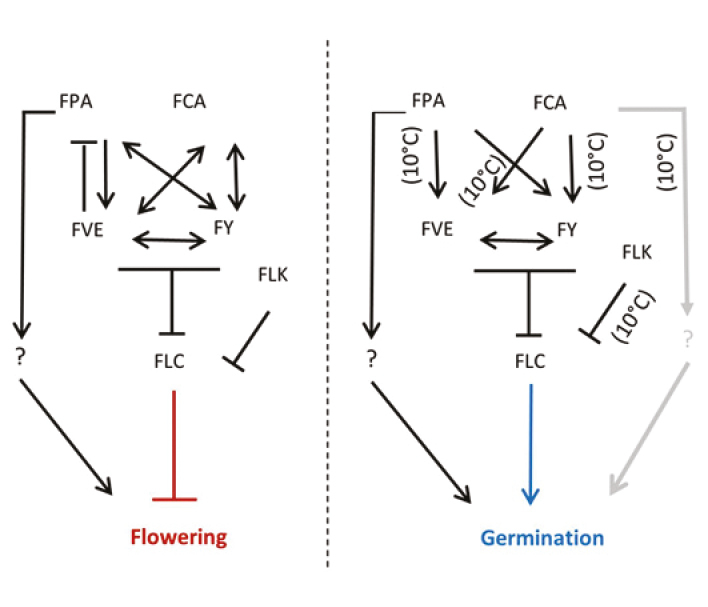
Annals of Botany 121: 183–191, 2018 doi: 10.1093/aob/mcx132
How does one gene accomplish more than one function? Auge et al. investigate how genes that control flowering in Arabidopsis thaliana also contribute to germination. The ‘autonomous pathway’ comprises several interacting genes that regulate flowering. They show that, despite some functional divergence across life stages, genes in this pathway interact in a similar manner to regulate both flowering and germination. Because of the high degree of concordance in the interactions that regulate both germination and flowering, genes in the autonomous flowering-time pathway likely contribute to genetic correlations between flowering and seed germination, possibly contributing to the winter-annual life history.
Authors: Gabriela A. Auge, Logan K. Blair, Aleena Karediya, and Kathleen Donohue


